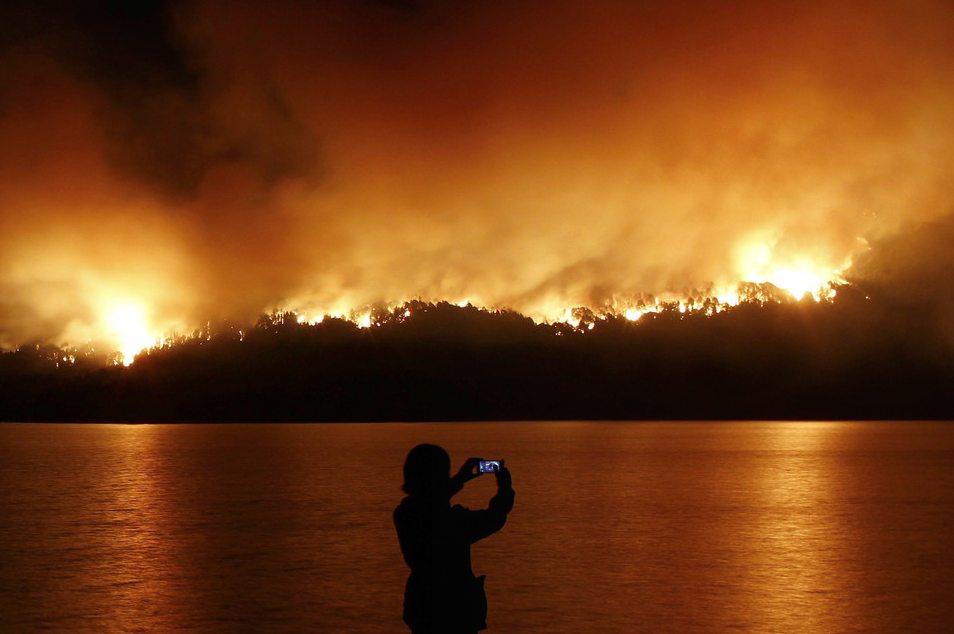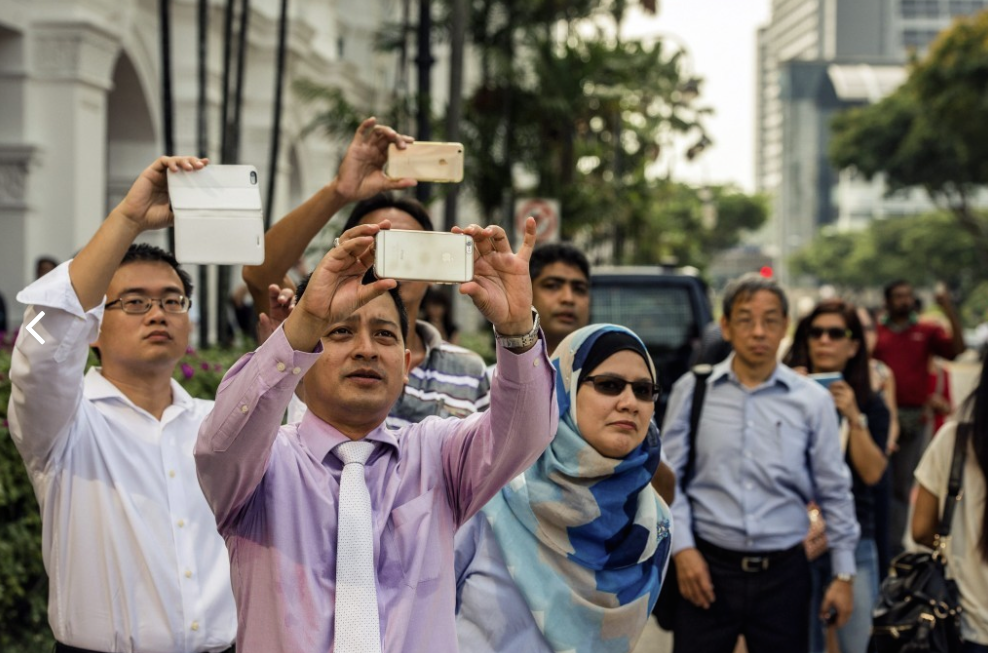The scene borders on the sublime. A silhouette of a woman cast in the glow of a distant fire that appears to be burning out of control. The gulf between the woman and the blaze is altogether calm, inviting a clear contrast with the raging flames and by extension underscoring the space—simultaneously near and far—between safety and danger. And, of course, it is the silhouette that ultimately frames the photograph and its affect. To get the point, imagine the photograph without the silhouette? The contrast of golden hues would still register as beautiful for most viewers no doubt, but all measure of the distance between here and there, of the sublime horror invoked by the image, would be effaced – or at least largely so.
All that aside, it was not color or even the silhouette that initially drew my attention to this photograph, but rather the fact that it is a photograph of someone taking a photograph. Photographs of people taking photographs has become something of a convention in recent times, and all the more so now that many (if not most) people in the western world carry cameras with them in their pockets and seem inclined to take photographs of … well, just about everything. And the question is, why? Not why do people take photographs of everything. I think we have done that for a long time now, contemporary technologies simply making it easier and easier to do. Rather, the question is, why has the photograph of people taking photographs become something of a visual trope … and a trope of what? In the photograph above the camera’s brightly lit screen stands in stark contrast with the golden color cast of just about everything else in the image—including the silhouetted photographer—and thus perhaps invokes a sense of the tension between nature and technology, a point gestured to by the caption which notes: “A woman takes a picture of fires raging through the Los Alerces National Park … A lighting strike is believed to be the cause.” And so the photograph here might indeed be driven by a profoundly artistic and/or ideological sentimentality. There is of course no way to know, but the omnipresence of the technology in modern times simply cannot be ignored.
The trope is perhaps a bit harder to explain in other, more common occurrences such as this photograph:
Here the caption reads: “People take photographs as the body of Lee Kuan Yew, Singapore’s first Prime Minister is transferred form the Instana Presidential Palace.” One might wonder why we don’t just have a photograph of the body itself being transferred. Or, for that matter, of the crowds gathered to view the transference. What is it about the fact that people are taking photographs of this scene that makes the convention so affecting?
I don’t have an answer to this question firmly worked out at the moment, but my suspicion is that it has something to do with the relationship between actors and spectators. There was a time, not so very long ago, when the prevailing assumption was that citizen spectators lacked agency. They viewed events, but they did it from an altogether passive space that muted their political voice if it did not erase it altogether. The seeing citizen did little more than see. The advance of camera technologies, and in particular the utter ubiquity of camera phones and portable screens, as well as the capacity for digital circulation, has given citizen spectators a whole new way of registering their voice—or is it their gaze? It helps us to see how one person uses their spectatorship to accent the space between culture and nature, as in the silhouette above, or how others mark the importance of the passing of a revered leader. In short, the seeing citizen is now also, and at least in some measure, an acting citizen.
We photograph people taking photographs perhaps because it marks an important shift in what it means to be a citizen spectator and, as with photojournalistic images in general, it helps us to understand how we see and are seen as citizens.
Photo Credit: Emiliano LaSalvia/Agence France-Presse/Getty Images; Tom White/European Pressphoto Agency.
Cross-posted at BagNewsNotes.

